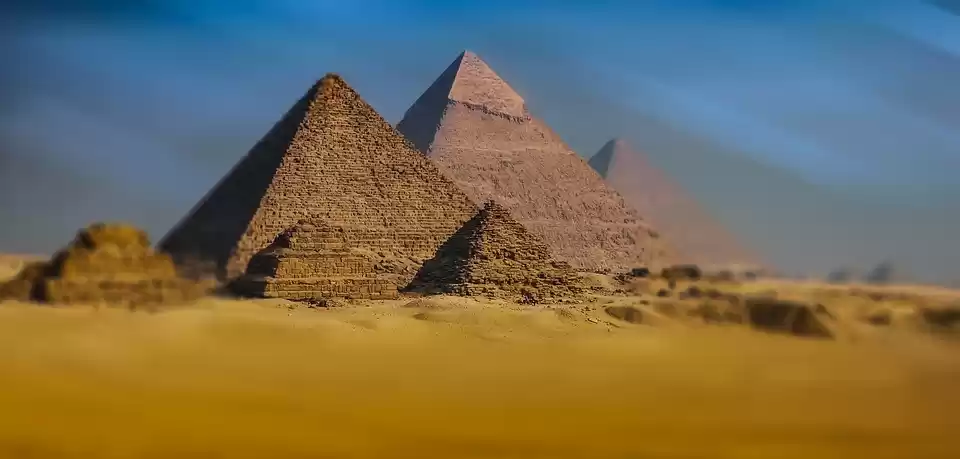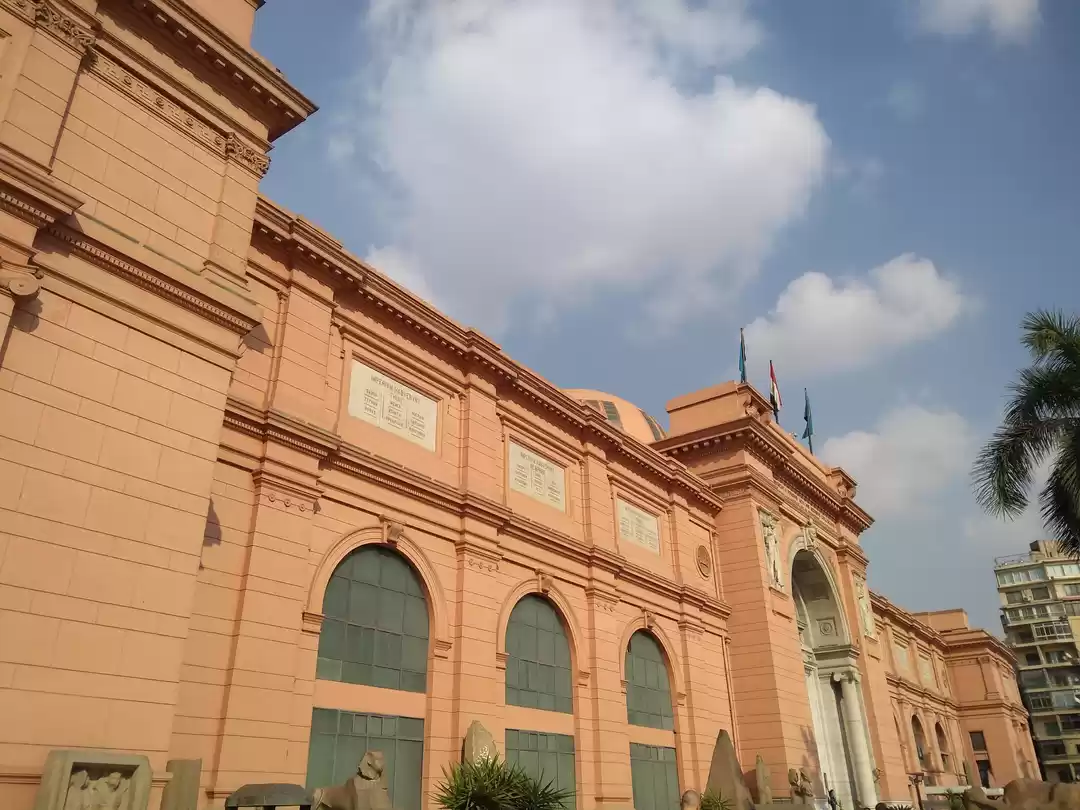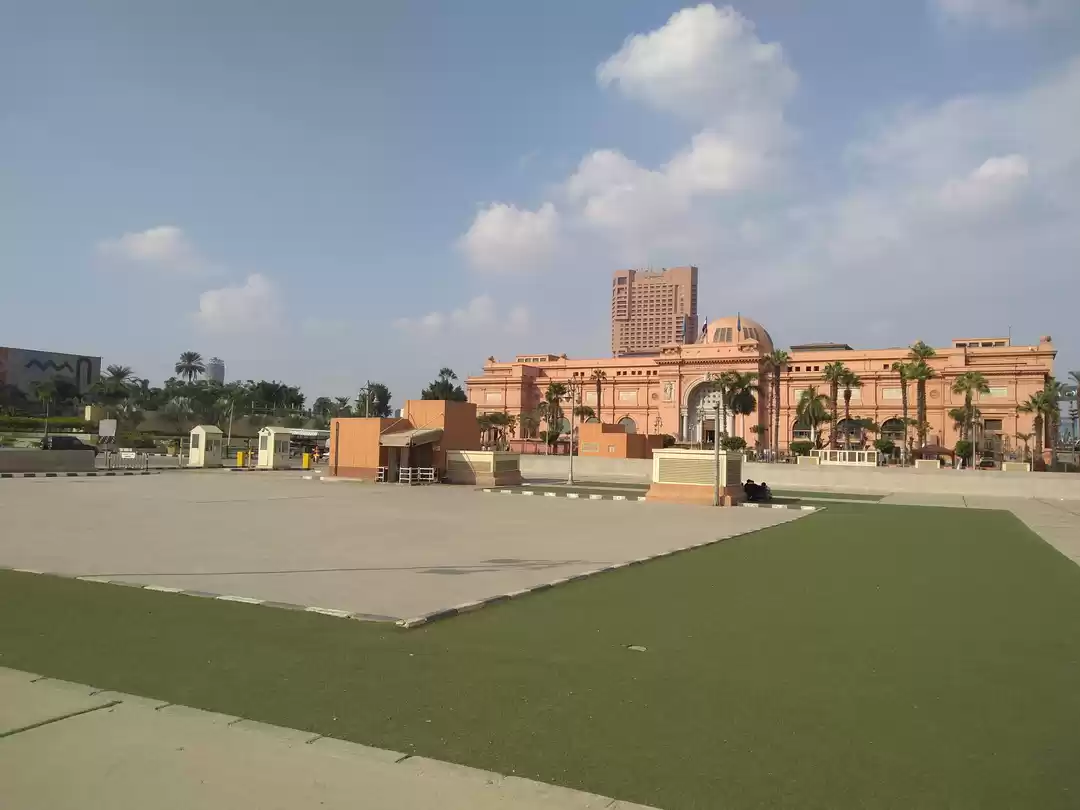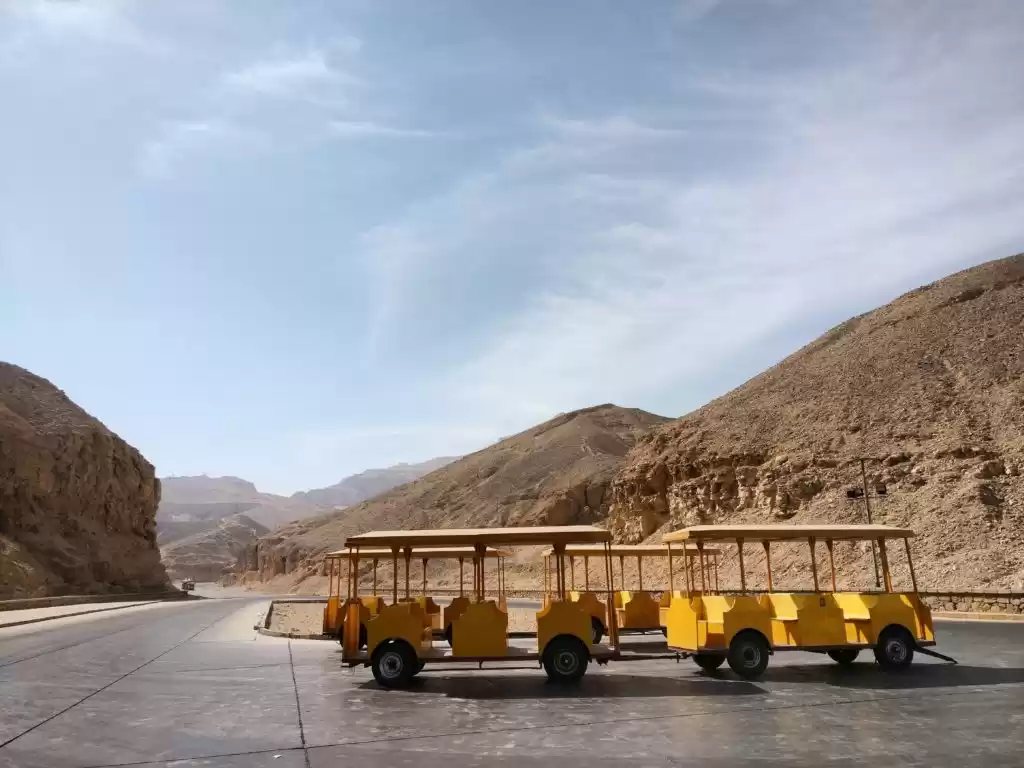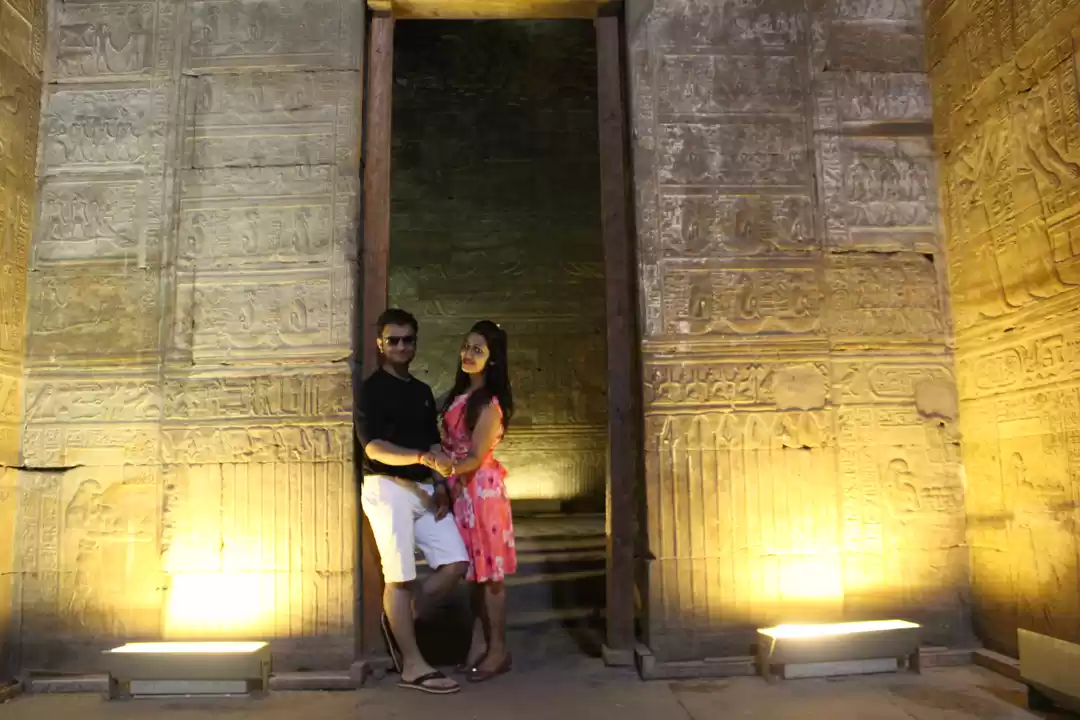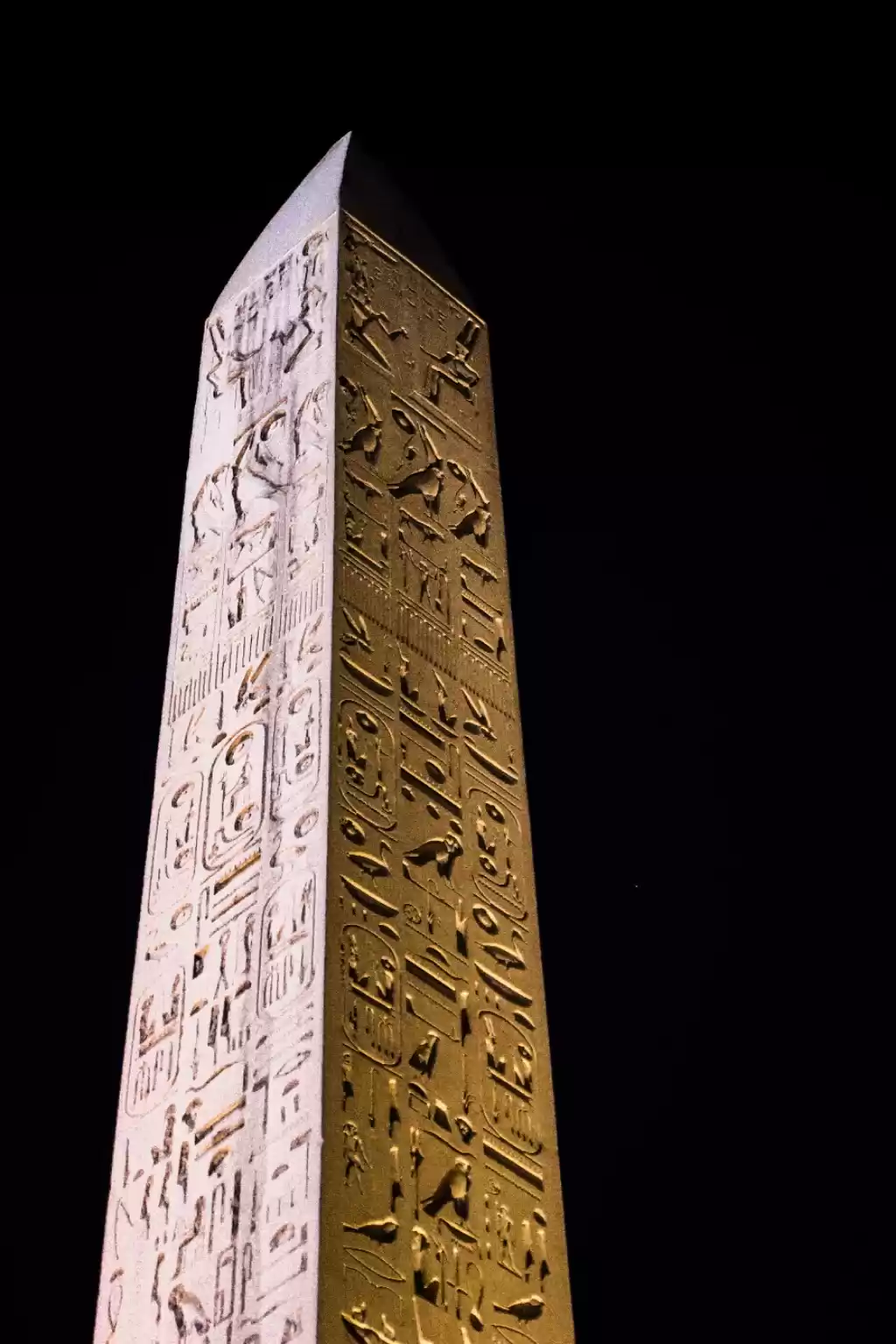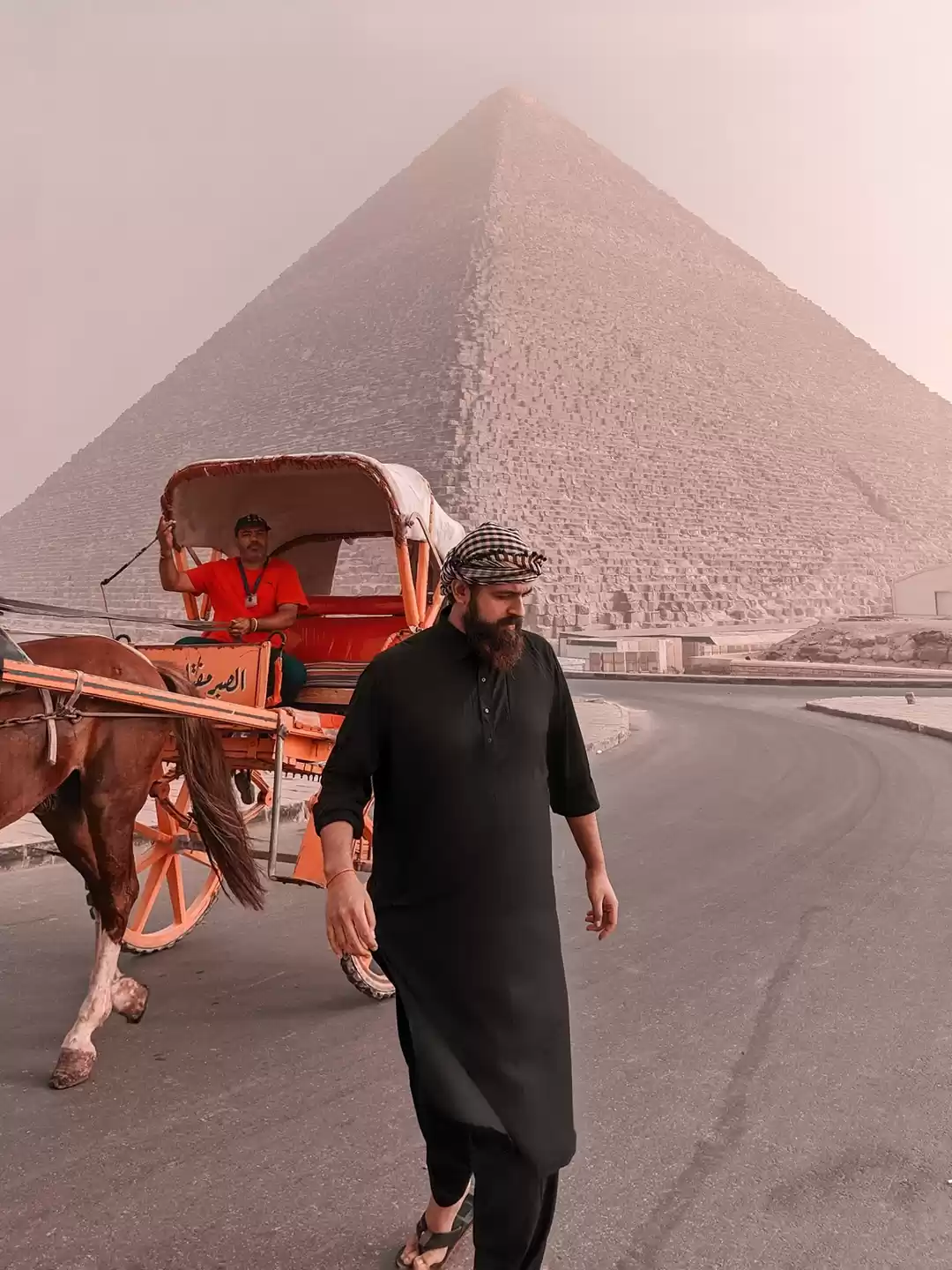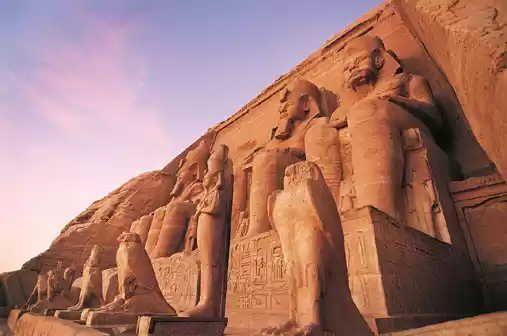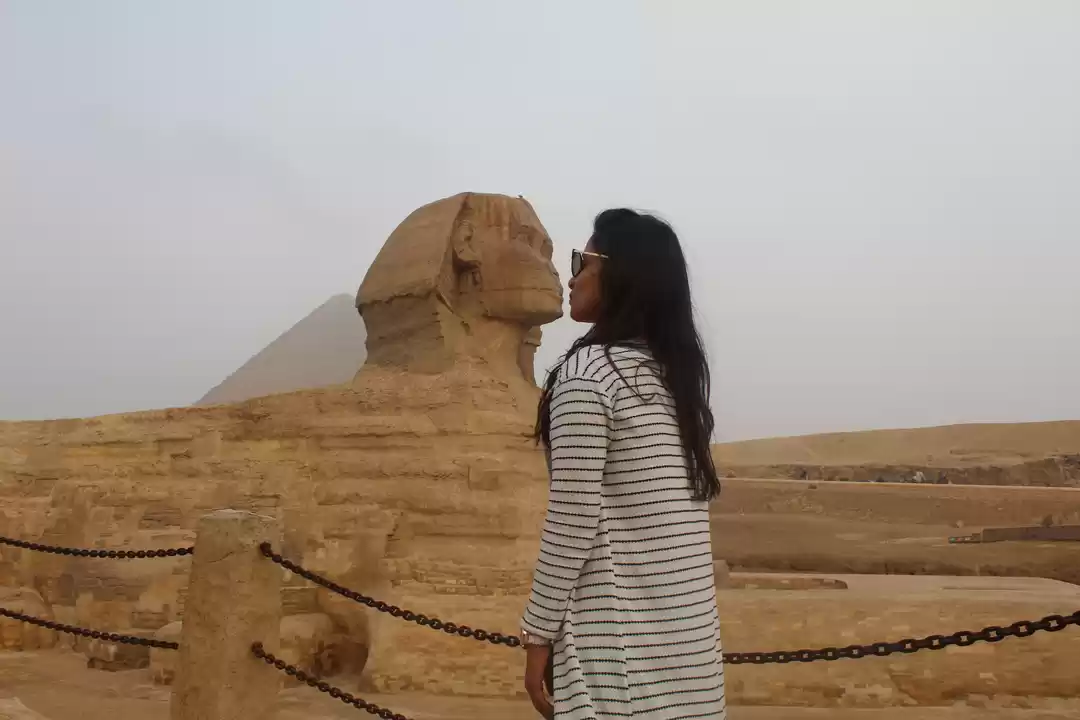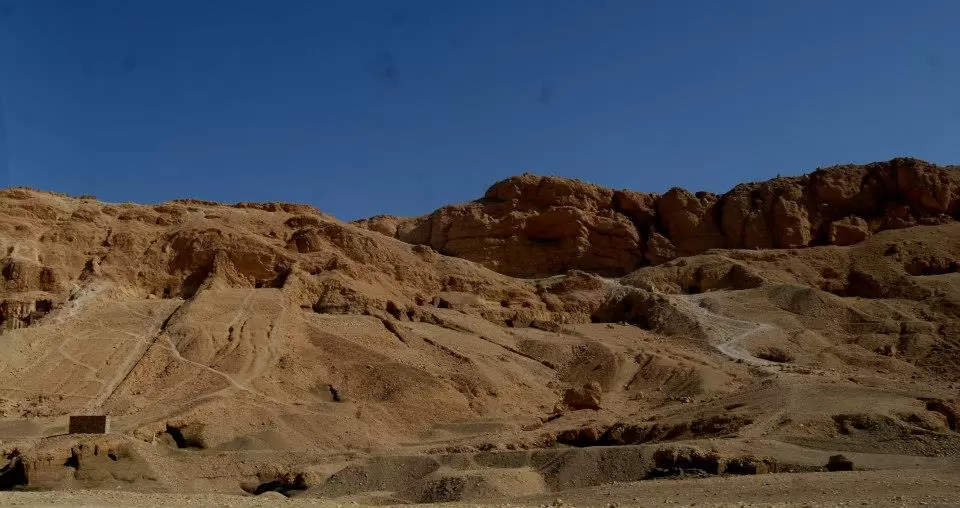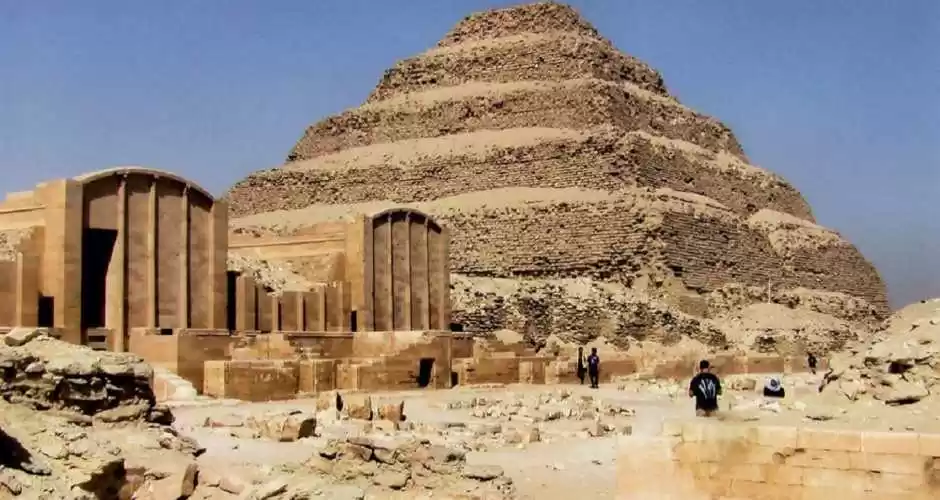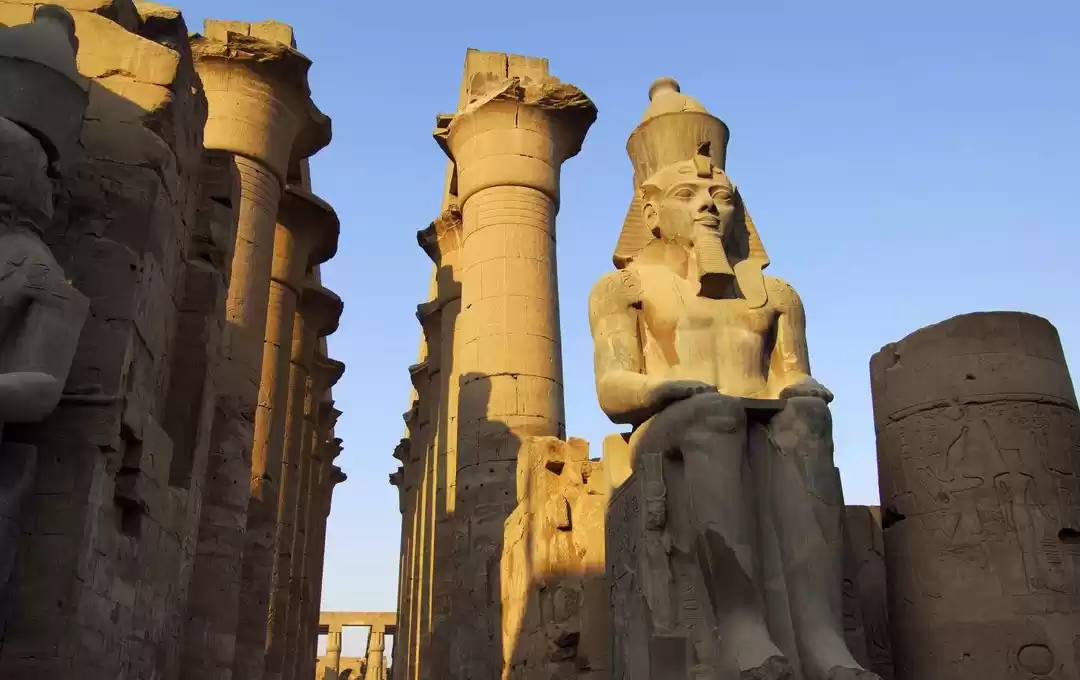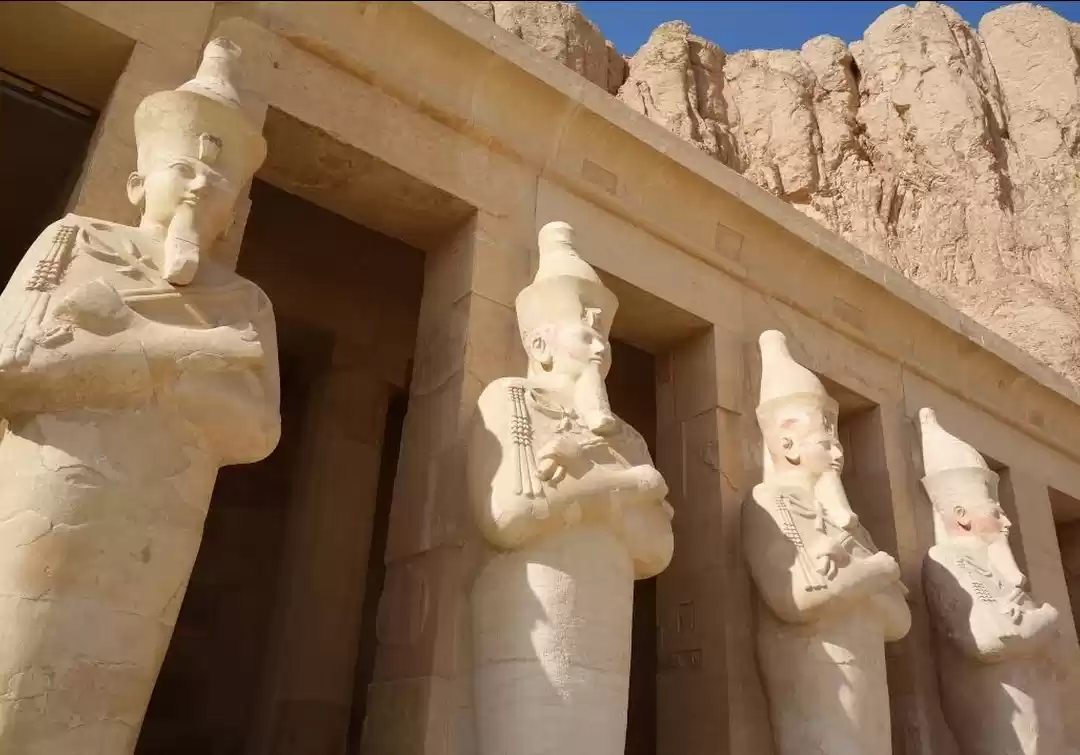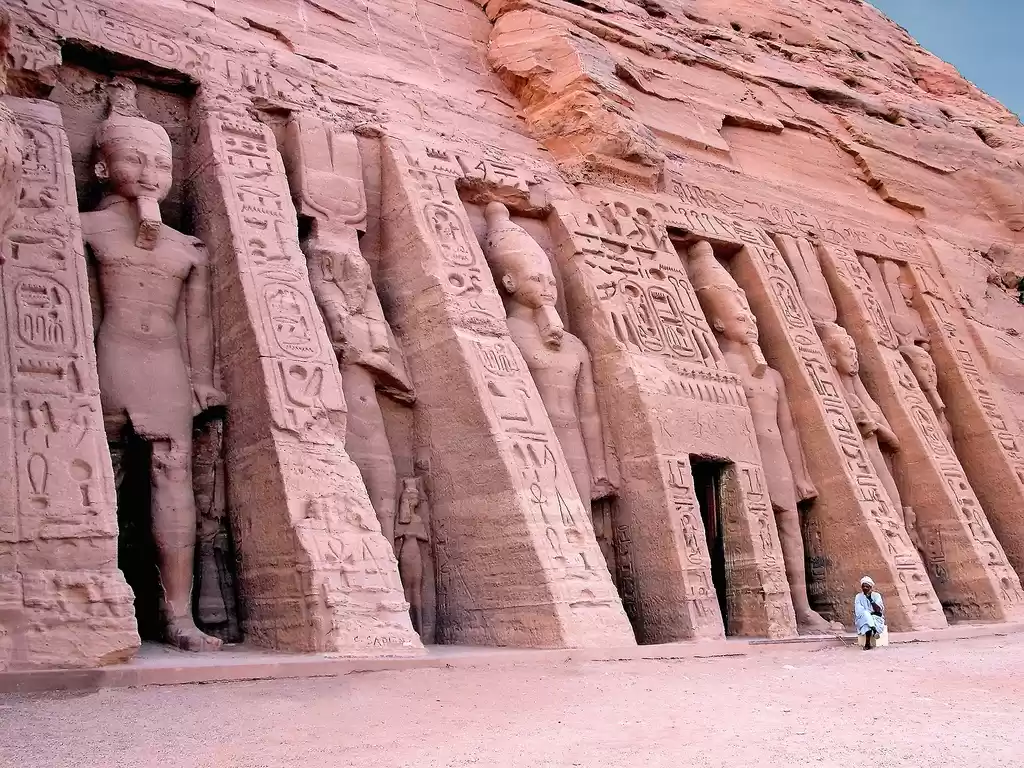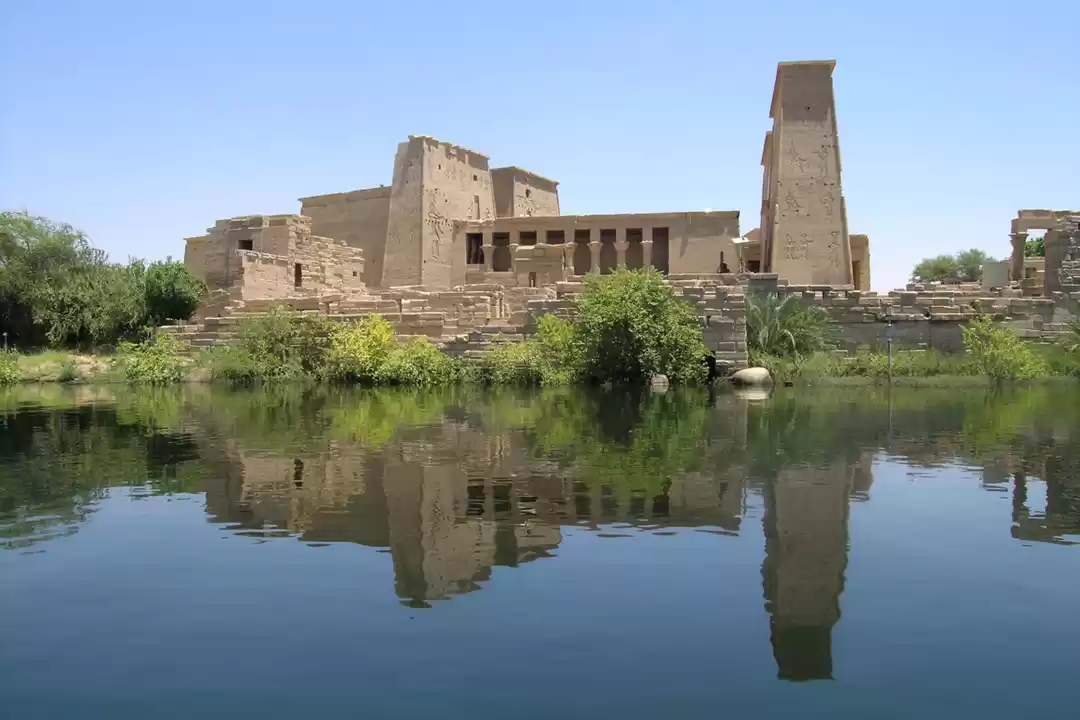Imagine standing in front of two colossal stone statues that tower over you, gazing at the horizon with a serene expression. Now imagine hearing a musical sound coming from one of them, as if they were greeting the rising sun. This is what the ancient travelers experienced when they visited the Colossi of Memnon, the oldest and most mysterious monuments of Luxor, Egypt.
The Colossi of Memnon are two massive statues of the pharaoh Amenhotep III, who ruled Egypt in the 14th century BC. They were part of his mortuary temple, which was once the largest and most splendid in Egypt, but now lies in ruins. The statues have survived the ravages of time, nature, and human interference, and still stand as a testament to the glory and power of ancient Egypt.
But what makes the Colossi of Memnon so special and intriguing is their ability to produce a musical sound at sunrise, which earned them the name of the singing statues. For centuries, people from different civilizations and eras have visited, admired, and wondered about the origin and meaning of this phenomenon. Some believed it was a miracle, others a curse, and others a trick. The mystery of the singing statues has fascinated and inspired many writers, poets, and travelers, who have left their mark on the statues with inscriptions and graffiti.
In this article, we will provide you with a comprehensive and practical guide to visiting and exploring the Colossi of Memnon and Luxor, the world’s largest open-air museum. We will cover the history, legend, and facts of the Colossi of Memnon, the best ways to reach, visit, and enjoy them, the best time to visit, where to stay, and what to do and see in Luxor. We will also give you some useful tips and advice on how to make the most of your trip, and what to avoid and be aware of when visiting the Colossi of Memnon and Luxor.
Whether you are a history buff, a culture lover, or an adventure seeker, you will find something to suit your taste and interest in this article. So, let’s get started and discover the ancient singing statues of Luxor!
History and Legend of the Colossi of Memnon
The Colossi of Memnon are not their original name. They were named by the Greeks, who associated them with Memnon, a mythical king of Ethiopia who fought and died in the Trojan War. According to the legend, Memnon was the son of Eos, the goddess of dawn, who mourned his death by weeping every morning. The Greeks believed that the sound of the statues was the voice of Memnon, calling out to his mother.
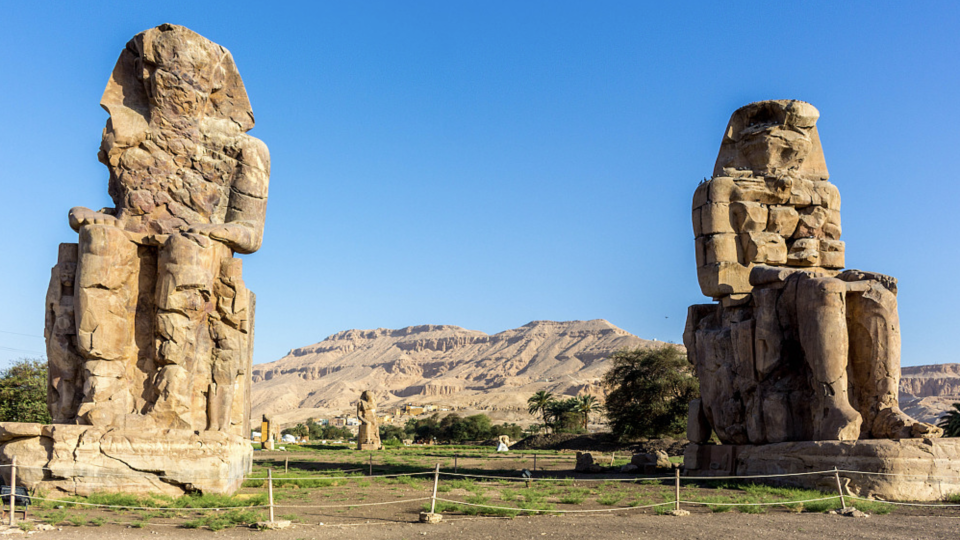
However, the statues have nothing to do with Memnon or the Trojan War. They are actually representations of Amenhotep III, one of the most powerful and prosperous pharaohs of ancient Egypt. He ruled for almost four decades, from 1391 to 1353 BC, during the 18th dynasty of the New Kingdom. He was known for his extensive building projects, which included temples, palaces, statues, and obelisks all over Egypt and beyond.
One of his most impressive and ambitious projects was his mortuary temple, located on the west bank of the Nile, opposite the city of Thebes (now Luxor). The temple was designed to commemorate his life and achievements, and to serve as a place of worship and burial for him and his family. The temple was also a symbol of his divine status, as he claimed to be the son of the god Amun, the king of the gods.
The temple was enormous, covering an area of about 385,000 square meters, and consisting of several halls, courts, chapels, pylons, and statues. It was decorated with exquisite reliefs, paintings, and inscriptions, depicting scenes from the pharaoh’s life, military campaigns, religious rituals, and festivals. The temple was surrounded by gardens, pools, and artificial lakes, creating a paradise-like setting.
The Colossi of Memnon were the most prominent and impressive feature of the temple. They stood at the entrance, flanking the first pylon, and facing east, towards the Nile and the rising sun. They were carved from quartzite sandstone, which was brought from a quarry near Cairo, about 700 kilometers away. Each statue measured about 18 meters in height, and weighed about 720 tons. They depicted Amenhotep III seated on a throne, wearing the double crown of Upper and Lower Egypt, and holding the symbols of his power, the crook and the flail. They were also accompanied by smaller statues of his wife, Tiye, his mother, Mutemwiya, and some of his daughters, standing at his feet or on his legs.
The statues were not only meant to honor and glorify the pharaoh, but also to protect and guard his temple and his eternal resting place. They were also believed to have a magical and spiritual power, as they were inscribed with prayers and spells that invoked the god Amun to grant the pharaoh eternal life and happiness.
However, the temple and the statues did not last long. Around 1200 BC, about 200 years after their construction, a massive earthquake struck the region, causing severe damage and destruction. The temple collapsed, leaving behind only fragments and rubble. The statues also suffered, losing parts of their bodies, faces, and crowns. But the most remarkable and mysterious consequence of the earthquake was that one of the statues, the northern one, started to produce a musical sound at sunrise, as if it were singing or humming.
The sound of the singing statue attracted the attention and curiosity of many people, who came from far and wide to witness and hear it. Some believed it was a sign of the god’s presence and favor, others a manifestation of the pharaoh’s spirit, and others a natural phenomenon. The sound also varied in pitch, volume, and duration, depending on the weather, the season, and the time of day. Some described it as a whistle, others as a moan, and others as a lyre.
The singing statue became a popular and famous attraction, drawing visitors, pilgrims, and writers from different civilizations and eras, such as the Greeks, the Romans, the Arabs, and the Europeans. Many of them left their mark on the statue with inscriptions and graffiti, expressing their admiration, awe, or disbelief. Some of the most notable visitors and writers who mentioned the singing statue include Herodotus, Strabo, Pausanias, Pliny the Elder, Tacitus, Juvenal, and Napoleon.
The mystery of the singing statue has inspired and fascinated many theories and interpretations, ranging from natural, supernatural, or human causes. Some of the natural explanations include the expansion and contraction of the stone due to the temperature changes, the evaporation of the dew or the moisture inside the cracks, the vibration of the air or the wind, or the echo of the birds or the animals. Some of the supernatural explanations include the intervention of the gods, the angels, the demons, or the ghosts, who either blessed or cursed the statue. Some of the human explanations include the manipulation of the priests, the soldiers, or the locals, who either used pipes, strings, or hammers to create the sound.
However, none of these theories have been proven or confirmed, and the mystery of the singing statue remains unsolved. The only thing that is certain is that the sound stopped in the early 3rd century AD, when the Roman emperor Septimius Severus ordered the restoration and repair of the statues, hoping to gain the favor of the gods. The restoration involved filling the cracks and holes with stone blocks and metal bars, which silenced the statue forever.
Today, the Colossi of Memnon are still standing, although they are weathered, eroded, and mutilated. They are still impressive and majestic, but they are also silent and lonely. They are the only remnants of the once magnificent temple of Amenhotep III, which is now buried under the sand and the fields. They are also the witnesses and the guardians of the history and the mystery of ancient Egypt, which is still alive and captivating.
Why Visit the Colossi of Memnon and Luxor
If you are looking for a unique and memorable experience in Egypt, you should not miss the Colossi of Memnon and Luxor. Here are some of the reasons why you should visit these amazing sites:
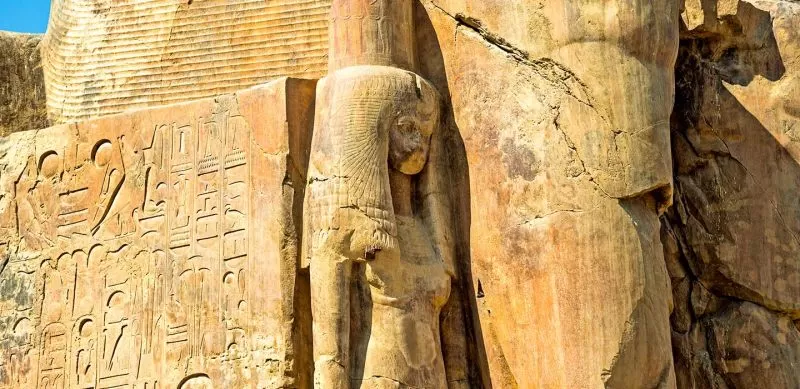
1. You will witness one of the oldest and most mysterious monuments of ancient Egypt, which have survived for over 3,000 years and still fascinate and intrigue people from all over the world.
2. You will learn about the history, legend, and mystery of the Colossi of Memnon, the ancient singing statues that once produced a musical sound at sunrise, and the theories and interpretations that have tried to explain it.
3. You will admire the beauty and majesty of the Colossi of Memnon, which are carved from quartzite sandstone and measure 18 meters in height and 720 tons in weight, and depict the pharaoh Amenhotep III and his family.
4. You will explore the ruins of the mortuary temple of Amenhotep III, which was once the largest and most splendid in Egypt, and discover the fragments and relics that reveal the glory and power of the pharaoh and his cult.
5. You will enjoy the scenic and serene setting of the Colossi of Memnon and the mortuary temple, which are surrounded by palm trees, fields, and mountains, and offer a stunning view of the Nile and the sunrise.
6. You will experience the culture and hospitality of the locals, who will welcome you with a smile and a cup of tea, and offer you a camel or a horse ride, a souvenir, or a story.
7. You will discover the wonders and treasures of Luxor, the world’s largest open-air museum, which boasts a rich and varied collection of temples, tombs, and museums, dating back to different periods and dynasties of ancient Egypt.
8. You will visit some of the most popular and iconic attractions in Luxor, such as Karnak Temple, Luxor Temple, Hot Air Balloon Ride, Mummification Museum, Medinet Habu, Felucca Ride, Luxor Museum, Temple of Hatshepsut, and Ramesseum, and immerse yourself in the history, architecture, art, and scenery of these sites.
9. You will have fun and adventure in Luxor, with a variety of activities and experiences to suit your taste and interest, such as cultural, historical, religious, adventurous, or leisurely.
10. You will find the best accommodation options in Luxor, ranging from luxury to budget, with a view of the Nile, the Colossi of Memnon, or the Valley of the Kings, and enjoy the comfort, service, and amenities that they offer.
As you can see, there are many reasons to visit the Colossi of Memnon and Luxor, and you will not regret it. Whether you are a history buff, a culture lover, or an adventure seeker, you will find something to suit your taste and interest in these sites.
So, what are you waiting for? Book your trip now and discover the ancient singing statues of Luxor!



